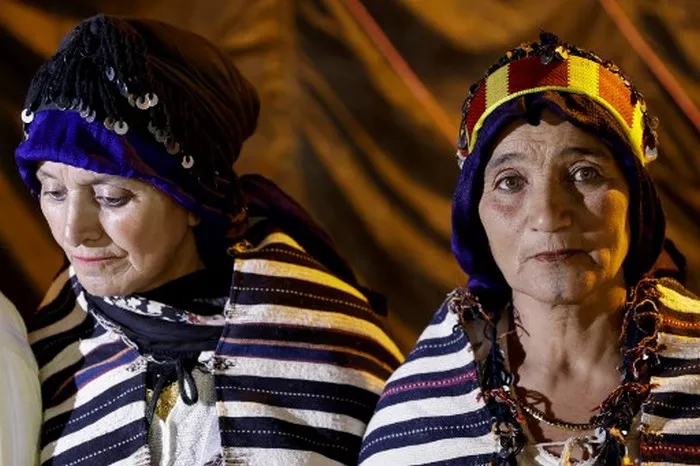Hannou Mouloud, now 67, vividly remembers the day her family took her to the Atlas Mountains to have her chin tattooed. As a young girl, growing up in the remote Imilchil village, she was told that tattoos were beautiful adornments, a cherished tradition passed down through generations of Moroccan Amazigh women.
“When I was six, they told me tattoos were pretty adornments,” Mouloud recalls, reflecting on the once-common practice among North Africa’s Amazigh groups, often referred to as Berbers but preferring the term Imazighen, meaning “free people.”
However, this ancient custom is slowly disappearing. Much like many Indigenous cultures where facial tattoos once held significant cultural value, the practice of tattooing is gradually fading. Many believe the decline of facial tattoos in Morocco is linked to the changing religious landscape over recent decades, with stricter interpretations of Islam gaining ground. In these interpretations, body modifications like tattoos and piercings are seen as forbidden.
Mouloud remembers the traditional process vividly: “We would use charcoal to draw the designs on our faces, then a woman would prick the drawing with a needle until blood came out.” She adds that a chewed green herb was used to rub the wound, helping to deepen the tattoo’s color. These tattoos varied in design, depending on the tribe, and served not only as expressions of beauty but also as symbols of origin and protection.
Hannou Ait Mjane, 71, also recalls the painful experience. “It would hurt, and we couldn’t hold back our tears,” she said. Yet, she emphasized, “it remains a tradition that our ancestors passed down to us.”
Morocco, home to the largest Amazigh population in North Africa, has witnessed its language, Tamazight, recognized as an official language alongside Arabic. The 2014 census revealed that over a quarter of Morocco’s 35 million inhabitants speak at least one Amazigh dialect, such as Tarifit, Tamazight, or Tachelhit.
Abdelouahed Finigue, a geography teacher and researcher from Imilchil, explained that women often tattooed their chins, foreheads, or hands, with some even tattooing intimate areas as a form of wedding gift, symbolizing love for their husbands. The designs varied among tribes and were rich in meaning.
Through tattoos, a woman expressed her beauty and independence, separate from any male influence. Finigue explains, “The circle, for example, represents the universe and beauty, much like the sun and moon, which held significant roles in local rites.” Tattoos were thus not just decorative but carried deep cultural and spiritual meanings.
However, the tradition has faced mounting pressure in recent years, as religious attitudes have shifted. “In recent years, this custom has been tainted by preconceived ideas from Salafist currents,” Finigue notes, referring to the Sunni Islamist movement that seeks a return to the practices of the Prophet Mohammed.
According to Bassou Oujabbour, a member of the local development association AKHIAM, the pressure on women with facial tattoos has intensified. “Fundamentalists sometimes describe tattooing as the devil’s book or as the first thing to be burned on the human body,” Oujabbour said.
The fear of religious punishment has even led some women to remove their tattoos long after they had them inked, believing it would save them from repercussions in the afterlife.
This clash of tradition and religion has left the once-cherished tattooing practice increasingly marginalized in Morocco’s modern society.
Related Topics

